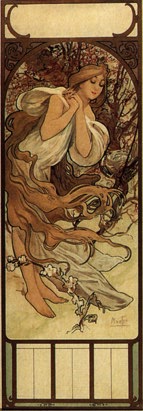
 Harris, Harris & Donahue Literary Agents http://harris-donahue.tripod.com |

Peter Zenner tackles the stupendous task of proving that our greatest national poet, William Shakespeare, the world's greatest poet, was not the author of the plays and sonnets. I think he proves fully that, in fact, it was Christopher Marlowe who did all this. The general, widely held belief is well described by Sir Walter Raleigh in his excellent book Shakespeare, 1907, in which he writes: Shakespeare's characters of women ... take us into a world unknown to his master Marlowe, with whom women are prizes or dreams. On p.65 we find: Marlowe, his master in the drama, he has honoured in the most unusual fashion by direct quotation: Dead shepherd, now I find thy saw of might: `Who ever loved that loved not at first sight?' As Marlowe is Shakespeare, this quote has an added interest. In Christopher Marlowe. A study of his thought, learning and character. 1946 (p.122), Paul H. Kocher writes: It is one thing to give an occasional airing to the Jewish point of view by way of a realistic drawing of character, as Shakespeare does with Shylock, and quite another thing to afford it frequent, powerful, and often uncontested expression, as Marlowe does through his hero. In his introduction to Marlowe's greatest early play Dr Faustus, A.H. Sleight wrote in 1958: ... full as his plays are of memorable scenes and haunting passages, he would never have equalled Shakespeare, whose calm-eyed moral vision and whose universality Marlowe lacked. All this has to go overboard! The true situation seems to be: There were three men involved: 1. A certain William Shakespeare who lived in Stratford. This Shakespeare had no real education where Marlowe went to University and was well-travelled. He wrote nothing more memorable than a few signatures. This Shakespeare became a prosperous businessman dealing in grain, land and property. This Shakespeare was not an actor nor a playwright. But his name was to become very useful to Marlowe and Marlowe's publisher, Richard Feld. 2. There was a William Shakeshaft, the third son of a butcher, who came from Lancashire. He was a tutor and an actor. At the lucrative bidding of Marlowe and Feld, Shakeshaft called himself William Shakespeare. Peter Zenner calls this William Shakespeare, the London man. In Sonnets 36 and 37, Marlowe says he and his publisher have to co-operate with Shakeshaft who becomes responsible for Marlowe's output as Marlowe cannot write under his own name now. Peter Zenner has dug out the truth about all this in a very fine piece of detective work indeed. William Shakespeare of Stratford was not a writer of plays, not a poet, and not an actor. His name was taken as a nom-de-plume by Shakeshaft when Marlowe had to hide his, Marlowe's, real identity. Marlowe got into trouble and had to disappear. When he went into exile, in 1593, aged 29, he was wanted by the authorities. He had been charged with blasphemy and sodomy, both punishable by death. As a spy, he had very influential friends including the Chancellor, Lord Burghley. His death was faked and he went into hiding. Thus the Shakespeare Invention was a Trinity: the name (William Shakespeare of Stratford) and William Shakeshaft, the front man who acted in London and who adopted the name of William Shakespeare, and Marlowe himself. Peter Zenner writes (p.316): It will surprise many people, when they find out that our national poet was a half-blind, lame, homosexual, retired spy, who lived in exile half of his life - supposedly dead! Thus Christopher Marlowe perpetrated the greatest literary hoax ever! He experimented deliberately with different styles of writing, as the earlier Marlowe and then as Shakespeare. This is difficult to do especially when the style is based on a fast flowing stream of inspiration. But he did it as we see from Sonnet 76. A Professor from Cambridge said to Peter Zenner, `If Marlowe wrote Shakespeare, then who wrote Marlowe? They were definitely written by two different people.' Peter Zenner writes Marlowe `convinced people at the time that he was "twain" ... and they still believe it!' Sonnet 99 is relevant here: ...thou teachest how to make one twain ... Also the problem of the notorious Dark Lady seems to have been solved at last. She was Lucy Stanley, third daughter of the 7th Earl of Northumberland; she had seven illegitimate children. Marlowe had a child by Lucy called Venetia, the eighth and last example of `The Bastard Shame' referred to in the Sonnets. In Italian, Venetia means Phoenix, the name of Marlowe himself, the poet who rose from the ashes to a new life as William Shakespeare. Later, he had incest with Venetia and wanted to marry her. His own daughter! Thus, this research supersedes such interpretations as made by, eg. Anthony Burgess in his Shakespeare (1970). On p.90 of this we find: Shakespeare's art did not develop out of Marlowe's. They were temperamentally too different ... Also (pages. 129, 130, 131): Who was the Dark Lady? ... The woman is best thought of as anonymous, an instrument of elemental pleasure, then remorse. To `Shakespeare' she was indeed `as black as hell, as dark as night,' (Sonnet 47) but, surely, Marlowe's feelings were deeper, stronger than Anthony Burgess here implies. The publisher of this excellent book - sensational in the best sense - is Richard T. Richardson. He has had three enquiries from television companies about documentaries; the Marlowe Society in the USA are interested in a film script. So we should all be hearing much more about Christopher Marlowe. The world is going to have to think again, and fundamentally, about this. The Droeshout engraving of `Shakespeare' seems to be definitely of Christopher Marlowe. This is familiar from the First Folio. If this is Marlowe at 58 then we are not so far from calm-eyed moral vision and universality after all. On p.61 we read that two Danish students enrolled at Padua University on 28th March, 1596. They were called Rosencrantz and Guildenstern! In the Epilogue to his farewell, The Tempest (written in 1611 and published in 1623), Christopher Marlowe alias William Shakespeare, wrote: Gentle breath of yours my sails Must fill, or else my project fails, Which was to please ... In this, Marlowe graduates to Prospero and Venetia to Miranda, a fitting culmination for both. In spite of some infelicities of expression in it, readers will surely delight in the rich feast this fine book offers them.
|
||||||||||||||||



